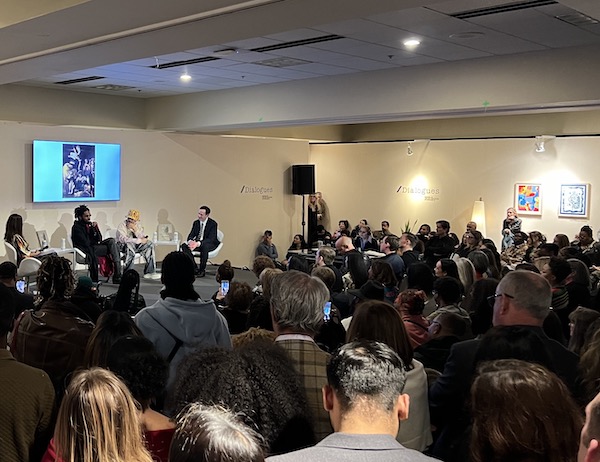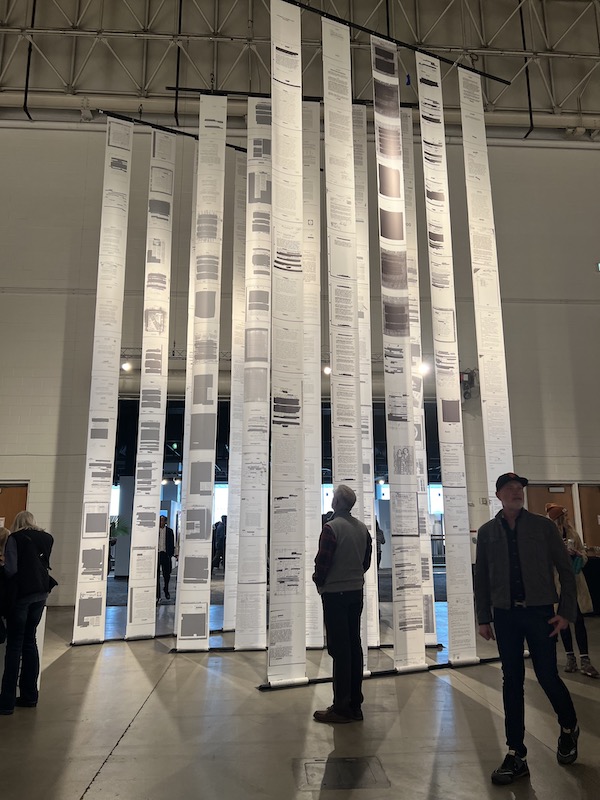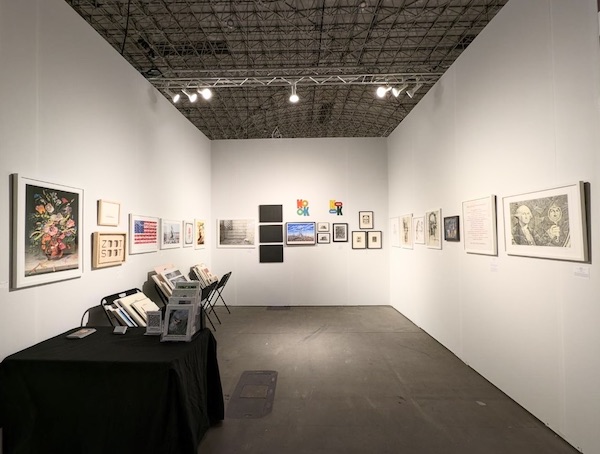Frieze's 2024 EXPO CHICAGO Sees Challenges and Changes

By BIANCA BOVA
When the news broke last July that Frieze had acquired The Armory Show and Expo Chicago, speculation (as it tends to in the art world) ran rampant. How long had the deal been in the works? How much did the art behemoth pay for the Chicago fair? Would they rebrand it, change dates, clean house and build a new team? And the rhetorical (and perhaps most frequently asked) question: who would have guessed that Tony Karman could keep a secret?
While the price tag or the mechanics of the deal may never be found out, last weekend the art world finally had a look at what the fair is developing into under its new ownership. The changes spanned nearly every aspect of the fair, though many admittedly may have been apparent only to those who have attended regularly over the preceding decade. The most striking difference was in Expo’s floorplan. In the prime real estate of the fair’s center core, where blue chip and mega galleries including David Zwirner, Gagosian, Hauser & Wirth, and Matthew Marks (all notably absent from the exhibitor list this year) could once reliably be found, there is now Exposure, the fair’s dedicated section for galleries ten years or younger. While 2024 Exposure curator Rosario Güiraldes secured a robust exhibitor list that included stalwarts like 56 Henry, The Hole, and Marissa Newman Projects–galleries that undoubtedly benefited from no longer being relegated to the fair’s periphery–the overall effect of the section’s centralization was that of passing through the doors to Expo but somehow finding oneself at NADA instead. As Expo moves into a second decade, in some ways it also manages to feel more youthful.

The makeup of the exhibitor list seemed to shift overall in 2024. It wasn’t just the mega galleries that stayed away this year, the number of Chicago galleries participating in the primary section of the fair seemed to dwindle as well. Especially notable was the absence of GRAY and of Kavi Gupta, both of whom had for years occupied significantly sized booths on the fair’s interior. While local dealers may have taken a step back, the fair continues to globalize its selection. This year’s Selection Committee (composed of John Corbett, Jim Dempsey, Leslie Hammons, Rhona Hoffman, Miles McEnery, Monique Meloche, and Nick Olney) welcomed galleries from the Canary Islands, Tel Aviv, Busan, Seoul, and Mahshahr, among other international locales.

Additional changes included the absence of longstanding beverage partner Ruinart, and their waistcoat-clad champagne servers, along with the cafes that once dotted the fair’s perimeter offering up made-to-order fare from Hannah’s Bretzel and Eataly. Sure, one could still find their way to the food counters at the show floor’s entrances, but that boxed lunch and drip coffee served from a samovar courtesy of Levy (Navy Pier’s in-house catering partner) personally didn't cure the fair fatigue the same way an overpriced prosciutto and asparagus sandwich and a complimentary cappuccino from the Nespresso bar in the VIP lounge used to.
On the subject of lounges, the Anchor Lounge, a space dedicated each year to guests of Presenting Sponsor Northern Trust, was relocated for the first time to a vacant restaurant space on the pier just west of the fair’s West Entrance, while the sponsor’s exclusive programming space, the Exchange Stage, remained on the 300 level of the exhibition hall along with the VIP lounge. This–compounded by a notable reduction in wayfinding aids and general signage throughout the hall and along the exterior of the pier–created what felt like an odd circulation of heavy back-and-forth foot traffic at the fair’s west end that would periodically bottleneck the back aisle. Whether these changes, along with the relocation of the Exposure section, are deliberate recalibrations under Frieze, or are simply the side effects of the unfortunate absence of Expo’s long-time designer Jason Pickleman (who helped usher the fair into existence, after serving as the designer of its predecessor, Art Chicago), remains to be seen in future editions. Either way, the result was an atmosphere that felt discernibly less polished than in years past.

None of these transitional effects managed to diminish attendance. The fair reported a total of more than 35,000 visitors to its eleventh edition, comparable to previous editions. By Saturday the robust headcount was unmistakeable, and crossing from one side of the fair to the other was a considerable challenge, as more and more people rambled among the booths.
Across the 170 exhibitors that participated, the trend of bringing large scale, two dimensional, primarily figurative works endured, as it seems to have since the online art sales boom of 2020. Whether this is related to the logistics of transporting and installing these works, their status as more imminently salable via PDF than their sculptural or installation-based counterparts, or simply the market forces at work today is difficult to discern. The Books & Editions section of the fair was also more established within the fair, with several participating galleries very pleased with their booth traffic and sales of affordable works.

Chatting with dealers in the fair’s final hours on Sunday (none of whom, unsurprisingly, wished to be identified on the record), the question of how the fair had gone was met, in most cases, with a shrug.
“It was fine.”
“I sold enough, but of course, I wish I’d sold more.”
“I sold work to the same people I always sell to here.”
Collectors, similarly, seemed satisfied, and many could be spied getting their artwork removal passes checked by security agents at the exits, cash-and-carry acquisitions tucked under their arms, or trollied alongside them. One such collector, Zach Smith, noted, “I picked up a small painting by Ellen Birkenblit from Corbett vs. Dempsey’s stellar booth. I have been following her career for years but was waiting for the right work for me. It has a mysterious noir vibe that appeals to me and of course Ellen’s formal painterly techniques are as good as it gets. The energy that Expo generates every year is so special for Chicago and this year was no different…same great people, galleries, and experiences as always from my perspective.”
Another local collector, Chris Craft, excitedly shared on his way out on Sunday afternoon that he and his wife had just purchased four works by various artists at EXPO.
So long as the collectors continued to find work worth acquiring, and the dealers sold enough to turn a profit on their booths, perhaps it's best to chalk up the 11th edition’s changes and challenges to having been a natural part of a growth year under new leadership. If there is any single certainty about Expo’s future under Frieze, it’s this: next year, all eyes will be back on the fair to see what its first full edition conceived post-acquisition will look like, and undoubtedly, next time around they will look with a less forgiving gaze.
#
The last day to view this year's fair online is April 19, 2024
EXPO CHICAGO returns in 2025 later in the spring, from April 24-27.